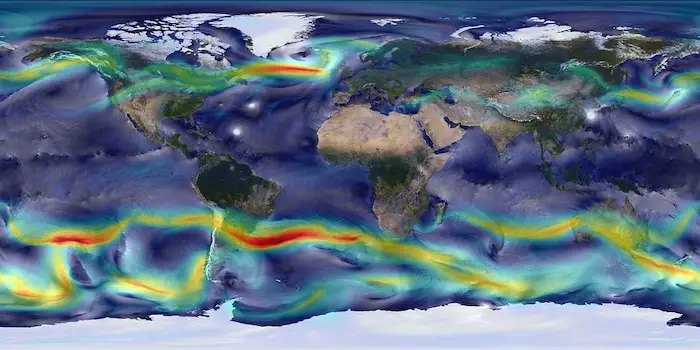Climate and the Environment
When we try to look at how organisms are distributed in the areas they are living in, one of the main reasons to explain it includes the climate experienced in the region. The planet’s global climate patterns are largely determined by the amount of sunlight and the way the planet moves in space.
Because the earth is round, its surface does not receive an even amount of sunlight and heat. The sun’s rays strike equatorial areas more directly than those away from the equator. As a result, areas in the equator absorb more heat than those in northern or southern latitudes.
In addition, the tilt of the earth’s axis causes seasons as it revolves around the sun. For instance, the Northern Hemisphere experiences summer when the earth tilts toward the sun in June and so the Southern Hemisphere experiences winter as the area is tilted away from the sun (less heat in the south = cold).

The tropics which lie between the Tropic of Cancer in the north and the Tropic Capricorn in the south experience the greatest amount of sunlight and the least seasonal variation (hence why we in the Philippines only have dry and wet seasons).
Those that experience the four seasons lie in temperate zones and these areas lie between the Arctic Circle and the Tropic of Cancer in the north; and the Antarctic Circle and the Tropic of Capricorn in the south. The polar zones are covered in ice due primarily to their location.
The uneven absorption of heat also results in global patterns of winds and rain. High temperatures evaporate water from the Earth’s surface and cause warm air to rise and flow towards the poles. As the warm air cools, its ability to hold moisture diminishes leading to water vapor condensing into clouds and rain falling.
The high temperature and ample rainfall explain why rainforests are concentrated near the equator. Meanwhile, in areas where the air descends, at about 300 north and south, the air exerts pressure that prevents water vapor from condensing and these areas are often where the world’s great deserts are often located.
This movement of air created what is known as the atmospheric circulation cells and for those interested, they are the:
- Hadley cells located in the tropics
- Ferrel cells on temperate regions
- Polar cells on either the north and south hemispheres
Think of them as cogs or gears that work together to redistribute the heat the Earth’s surface absorbs.

The air movements in conjunction with the Earth’s rotation result in major global air patterns known as the prevailing winds. Because the Earth is spherical, its surface moves faster in the equator where it has the greatest diameter compared with other latitudes.
Imagine that air itself moves vertically, up and down, but you on Earth’s surface move with the counter-clockwise rotation of the Earth so you would feel like the wind blows from a certain direction when it might just be you being carried by the planet to meet with the descending air. This is known as the Coriolis effect where the air gets deflected due to the rotation of the Earth.
In the tropics, the prevailing winds are known as the Easterlies or the Trade Winds (think of Amihan and Habagat in our country) while those in temperate regions are known as the Westerlies.
The combination of the prevailing winds, Earth’s rotation, unequal heat absorption, and the locations and shapes of the continents create the ocean currents, the river-like flow patterns at the ocean’s surface. Ocean currents have profound effects on regional climates and can even explain the El Niño and La Niña phenomena and the distribution of aquatic organisms, like how upwelling areas in some peninsulas explain why Zamboanga have more sardines caught relative to other areas in the country.
Speaking of distribution, our next topic will cover how the abiotic factors influence and control the distribution of organisms and therefore result in biomes.
Next topic: Biomes of Planet Earth
Previous topic: Abiotic Factors in the Environment
Return to the main article: The Principles of Ecology
Download Article in PDF Format.
Test Yourself!
Copyright Notice
All materials contained on this site are protected by the Republic of the Philippines copyright law and may not be reproduced, distributed, transmitted, displayed, published, or broadcast without the prior written permission of filipiknow.net or in the case of third party materials, the owner of that content. You may not alter or remove any trademark, copyright, or other notice from copies of the content. Be warned that we have already reported and helped terminate several websites and YouTube channels for blatantly stealing our content. If you wish to use filipiknow.net content for commercial purposes, such as for content syndication, etc., please contact us at legal(at)filipiknow(dot)net
